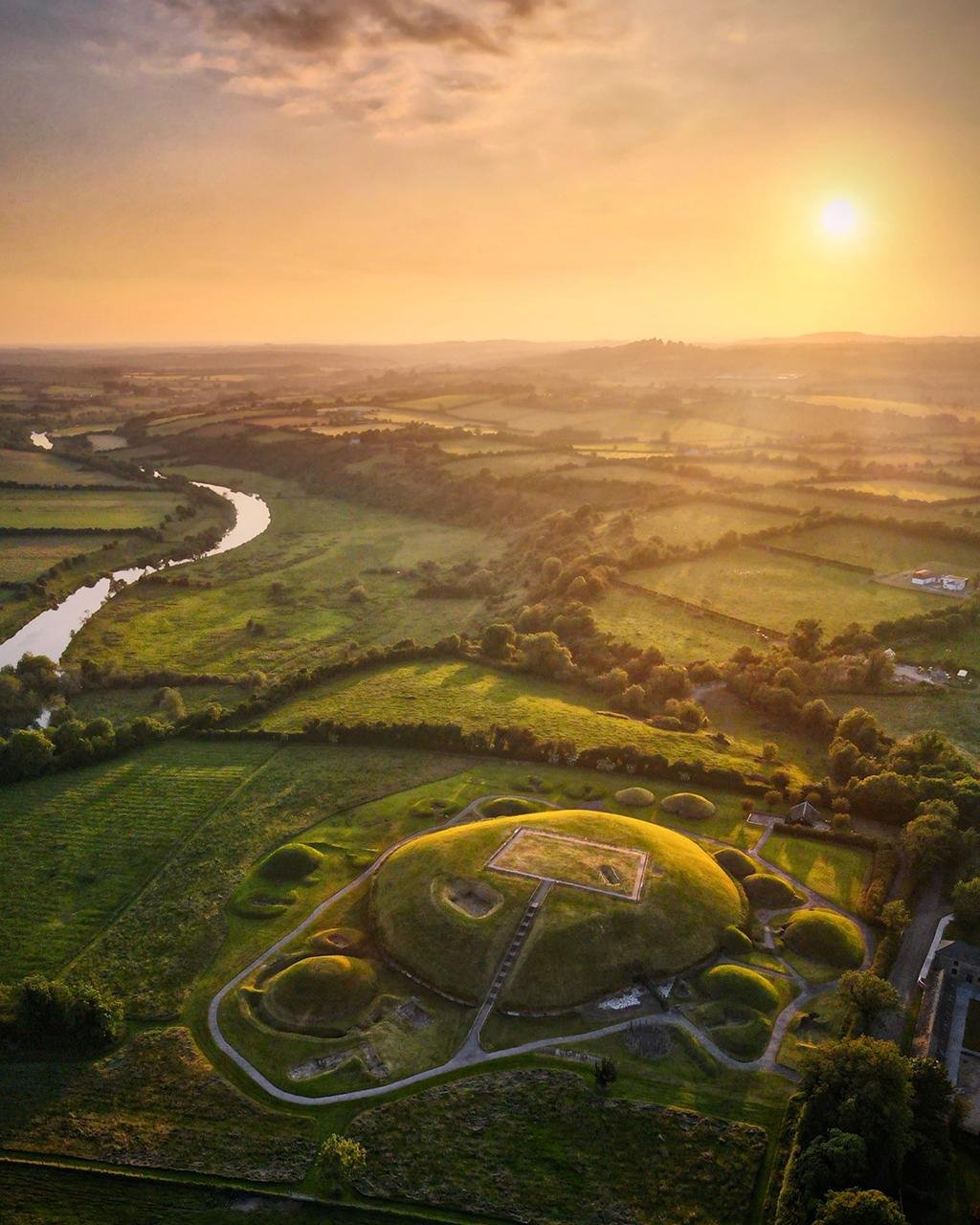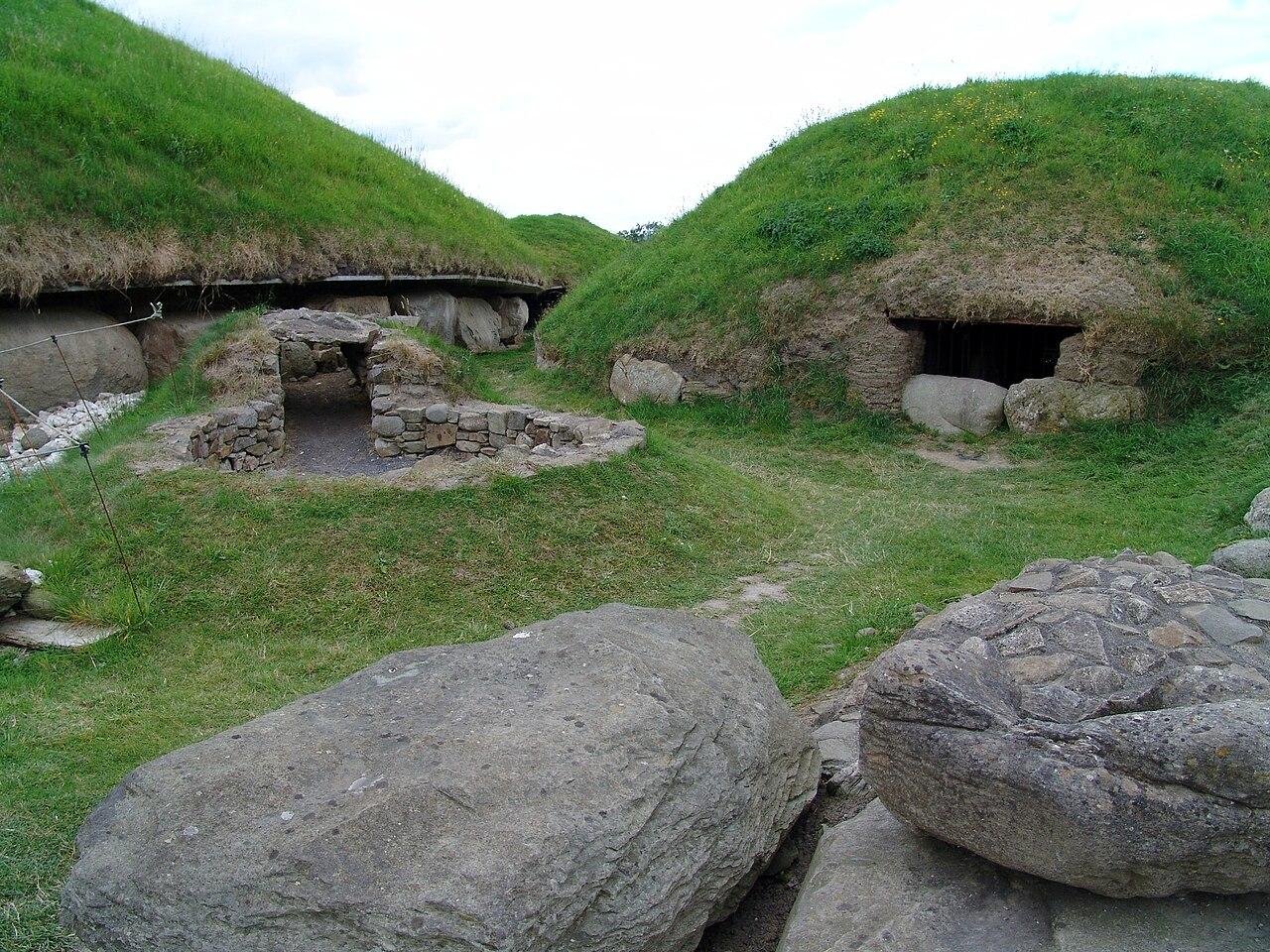Recent research is rattling established theories about Ireland’s Neolithic tombs. What were once thought to be royal burial sites are now reported to be places where communities congregated, not dynasties.
 Newgrange in County Meath, Ireland. Credit: Ron Cogswell (CC BY 2.0)
Newgrange in County Meath, Ireland. Credit: Ron Cogswell (CC BY 2.0)
The study, published in the Cambridge Archaeological Journal, used ancient DNA from 55 individuals buried in large stone tombs across Ireland. The tombs, known as pᴀssage tombs, were built between 3900 and 2500 BCE, with the largest ones dating to after 3600 BCE. Famous sites like Newgrange, Knowth, and Dowth fall under this category.
While earlier theories claimed that the tombs were those of influential families, perhaps with inherited powers, new facts counter this. “We cannot say that these tombs were the final resting places of a dynastic lineage who restricted access to ‘burial’ within these tombs to their relatives,” the researchers wrote in the study.
Carlin and his team found that the majority of the people who were buried together were not close relatives. In many cases, individuals were distantly related — like sixth cousins. Some were not related genetically at all. This contradicts the 2020 hypothesis that a ruling elite had authority over burial rights. Instead, the researchers argue that these tombs reflected a broader idea of community.
 A section of the pᴀssage leading towards the chamber of the Newgrange pᴀssage tomb in Ireland. Credit: O’Dea. (CC BY-SA 4.0)
A section of the pᴀssage leading towards the chamber of the Newgrange pᴀssage tomb in Ireland. Credit: O’Dea. (CC BY-SA 4.0)
These burials were more than just graves. They were gathering spots where people ᴀssembled to work, feast, and practice rituals. A number of the tombs had been used for many centuries. A majority of the bodies showed evidence of cremation, dismemberment, and other funerary practices. Such practices reveal sustained rituals and not simple burials.
The study revealed that “kinship” in Neolithic Ireland was not just about blood. It was about shared life. People formed relationships through work, ceremonies, and beliefs. Scholars call this phenomenon “kinwork” — creating family based on what people did together, not through who they were born to.
 Knowth tomb overlooking the River Boyne in County Meath, Ireland. Credit: Markiemcg1, (CC BY-SA 4.0)
Knowth tomb overlooking the River Boyne in County Meath, Ireland. Credit: Markiemcg1, (CC BY-SA 4.0)
The change seems to have happened around 3600 BCE, following four centuries of simpler burials in small tombs. Some of the earlier sites did include closer relatives. But as the tombs grew larger and more complex, the people placed within them became more diverse. This shift suggests a social change — from small, close-knit groups to larger, connected groups.
The resources for building some tombs were drawn from more than 40 kilometers away. This suggests mᴀssive coordination, and maybe even the rise of shared cultural or religious systems over large areas of Ireland.
 Knowth tombs. Credit: Dylan, (CC BY 2.0)
Knowth tombs. Credit: Dylan, (CC BY 2.0)
The research team — Carlin and scholars like Smyth, Frieman, and Hofmann — proclaim that such findings reshape our conception of the past. Rather than a world of dynasties and kings, Neolithic Ireland may have been a place of equality, ritual, and shared idenтιтy.
Still, much work remains. “We need more ancient DNA samples and deeper analysis of key sites,” the researchers wrote. This includes looking at bones, artifacts, architecture, and settlement patterns together. Only by combining these sources, they argue, can we truly understand the complex web of social life in prehistoric Ireland.
By excluding ideas solely based on genetics, the study urges archaeologists to see kinship as something more than biology. As Carlin described, “This was a more equal society.”
More information: Carlin N, Smyth J, Frieman CJ, et al. (2025). Social and Genetic Relations in Neolithic Ireland: Re-evaluating Kinship. Cambridge Archaeological Journal:1-21. doi:10.1017/S0959774325000058





